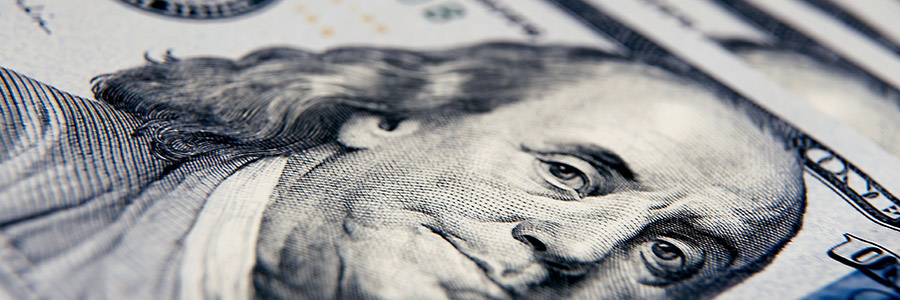U.S. Election Dynamics Looking Positive for Gold
By: Bart Melek
May 03, 2024 - 6 minutes
- The results of the upcoming 2024 U.S. presidential election (the election) are set to be consequential to energy & climate, international relations, industrial and fiscal policies. Even if President Joe Biden remains in power and the Senate & House are controlled by the same parties as they are now, political debate in the coming months along with policy drift in response to opinion polls are sure to occur.
- This already is shaping, and will no doubt continue to shape, the market outlook for gold, silver, Platinum Group Metals (PGMs), copper and crude oil. A regime change in the White House and Senate has the potential to reduce spending for environmental initiatives financed by the allocations under the Inflation Reduction Act (IRA). This change would be a modest negative for copper and silver, but a positive for PGMs. Crude oil and fossil fuels should also benefit.
- A Republican (GOP) administration is likely to push lower taxes with spending largely unchanged. The resulting higher deficit projections, from the already very high numbers, should help gold as it suggests higher inflation, lower real rates and continued central bank buying. A likely even more adversarial stance toward China and Iran taken by a Republican administration would also contribute to gold's good fortune and should see oil well supported.
The election is perceived to be very impactful on the lives of Americans, America's allies, and adversaries throughout the world. The next president will set policies on numerous fronts of public life, ranging from social, fiscal, trade, environmental and military and geopolitical policies. The Global Strategy Commodities team explores environmental, fiscal and foreign policy pre-election and post-election dynamics as those are to be most consequential for our focus on gold, silver, PGMs, copper and crude oil markets.
2024 Presidential Election
Less Robust Environmental Policy a Modest Negative for Silver and Copper but Good for PGMs
The IRA, which was enacted in 2022 and contains several measures that aim to promote decarbonization of the U.S. economy, may change should the occupant of the White House change and the balance of power tilt toward the Republican party in Congress.
The Act has the potential to increase America's expenditures on climate initiatives. In aggregate, around U$370B will be allocated for measures dedicated to improving energy security and accelerating clean energy transitions.
If there are reductions to these commitments, copper and silver are likely to be impacted negatively. A reduction in electric vehicle (EV) subsidies would mean less demand for battery powered vehicles, and thus less copper and silver demand growth. Less investment in electricity transmission, charging, and power generation infrastructure would also negatively impact copper.
Both a reduction to mandated U.S. CAFE (fuel economy) standards and fewer subsidies for EVs would negatively impact silver and copper but would help PGMs. As we are already seeing, due to the lack of charging infrastructure, high costs and distance anxiety, the U.S. public has partially turned away from pure EVs. Under a new administration, it is likely that there would still be a more organic push to higher fuel efficiency. This suggests that hybrid vehicles would fill that gap. Hybrids use petroleum products, batteries, and electric motors.
So, the negative impact on copper and silver may be quite limited from U.S. policy changes, but the relative boost to platinum and palladium could be substantial. Hybrids use as much PGMs as do Internal Combustion Engine (ICE) vehicles. From a global perspective, China and Europe will keep the current trend mostly intact, which given the projected deficits in copper and silver means very firm prices indeed.
Sky-High Deficits and More Adversarial U.S.-China Relations a Manna for Gold
The U.S. debt in March 2024 was around U$34.59T, roughly 100 percent of Gross Domestic Product (GDP) and, according to the Congressional Budget Office (CBO), will steadily increase over the next 30 years. The fear is that it will be partially monetized, as there is little appetite for higher taxes.
The total U.S. deficit is projected to grow from a projected U$1.6T (5.6 percent of GDP) in fiscal year 2024 to U$1.8T in 2025. The U.S. deficit would likely grow even larger if Trump were to become President again. In sharp contrast to Mr. Biden, the GOP may try to reduce taxes. Meanwhile, there is no substantive plan to reduce spending.
Persistent massive deficit spending under the Biden administration and a Fed that was very slow to hike rates in response to the recent inflation spike have already helped to drive investors into gold as purchasing power protection or a hedge against long-term U.S. dollar depreciation.
A rise in geopolitical tensions globally, as well as continued stresses between the U.S. and China in the South China Sea and over Taiwan have also served to encourage buying as some central banks diversified away from USD and other fiat currencies. This may have been a reaction to sanctions against Russia, which prevented Moscow from accessing some half of their FX reserve holdings. Meanwhile the Putin administration is reported to have been using physical gold to secure trade with Russia-friendly countries.
Indeed, 2022 saw central banks buy a record 1,136 tons of gold and a near record amount in 2023. This buying spree coincides with a trend among central banks globally to diversify their holdings to reduce their reliance on the U.S. dollar. The last two years recorded the highest level of net purchases of gold on record dating back to 1950, including since the suspension of dollar convertibility into gold in 1971.
The People's Bank of China (PBoC) has been on the forefront of this activity — as it snapped up the yellow metal for 17 straight months — with its holdings of the precious metal rising 16 percent over this period. In 2023, the PBoC bought 225 tons of gold. In March 2024, China's gold reserve rose by 5 tons, taking the country's total holding to 2,262 tons or 4.4 percent of its FX reserves.
Diversifying FX reserves due to U.S. dollar purchasing power concerns and geopolitical tensions should continue to be strong demand drivers in 2024 and beyond. The yellow metal protects against purchasing power erosion, and is a good inflation hedge due to the fact it is a real asset, which requires real inputs such as labor, capital and energy to produce. At the same time, since it is a highly liquid, scarce asset with intrinsic value, and it is no one’s liability, it makes it a great way to diversify an investment portfolio and central bank FX reserves making it sanction proof.
Subscribing clients can view the full report, U.S. Election Dynamics a Positive for Gold— With Mixed Impact on Key Commodities, on the TD One Portal






